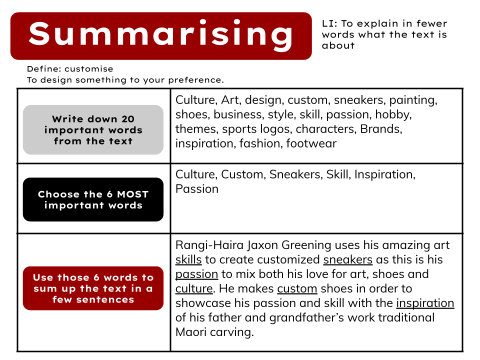LI: to explain in fewer words what the text is about.
Our challenge today was based on looking at the work Rangi-Haira Jaxon Greening creates. Rangi-Haira showcases his skills by painting custom designs on shoes with the inspiration of the traditional Maori carving his grandfather and father had done. We read an article that explained what Rangi-Haira had done with his work in order to create a summary. By reading the artice, we could gather 20 keywords, narrow it down to 6 keywords and then create a summary which had all the important main points. I found it interesting how passionate Rangi-Haira is while working with shoes and designing shoes.


















